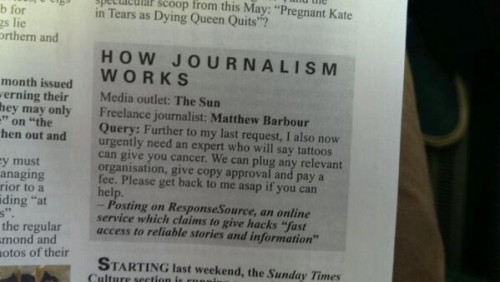So you won’t be surprised that I really like that Erin Podolak has asked, Can We Stop Talking About Carl Sagan?
It feels like I’m committing an act of science communication sacrilege here, but I have a confession to make: Carl Sagan means absolutely nothing to me. No more than any other dude from my parents 1970′s yearbooks that could rock the turtle neck/blazer combo with the best of them. There, my secret is out.
I’m not saying I don’t like Sagan – I’m saying Sagan has zero influence on me or what I do. To me, Sagan is a stereotypical old white guy scientist who made some show that a lot of people really liked more than 30 years ago. That show – Cosmos: A Personal Voyage -was on air nearly a decade before I was even born. The reason I bring up my own age is because I’m as old, if not older, than the prime audience for science communication. I think anyone can learn to appreciate science at any age in life, but we stand the best chance at convincing people that science is something they can understand (and even do themselves) early in life when their beliefs are not so entrenched.
So then why, WHY as science communicators do we keep going around and around among ourselves about how Sagan – who is so far outside my life experience, let alone that of people younger than me – was the greatest science communicator of all time? We keep talking about who will (or won’t) be the next Carl Sagan but I promise you, no high school kid gives a f*&^ about Carl Sagan let alone whether or not science communicators think he was great. We spend so much time and energy talking about a guy that isn’t relevant anymore. The topics of space, the natural world, and how to communicate wonder are totally relevant to the public and to the science writing community. But, this one guy? Nope.
Oh, good. Now I can confess that I too was not a Sagan fan boy. I liked him all right, I appreciated what he was doing for astronomy, and I’m not going to argue with you if he inspired you. He did great work! But his voice didn’t resonate with me.
To me, he was completely overshadowed by that other white guy with a documentary popularizing science at the same time, Jacob Bronowski. There was no comparison. I watched Cosmos and learned stuff, but the man who inspired me and made me think was Bronowski. You do appreciate that different people will respond to different messages, right?
My other big inspirations in the 70s, when I was getting fired up to go study science, were Edward Abbey, Rachel Carson, Stephen Jay Gould, EO Wilson (that those last two were feuding was so discouraging to me), and Jacques Cousteau. A bit later I was avidly reading Peter Kropotkin and Aldo Leopold. When I was acquiring a focus on developmental biology, it was D’Arcy Thompson, John Tyler Bonner, and Gould (again!) — and when I really was deeply into the field, the brains that blew me away with their work were those of Christiane Nusslein-Volhard, Mary Jane West-Eberhard, and Susan Oyama. Notice — they were biologists or biology-centered. It was nothing personal against Sagan, he just wasn’t writing about things that interested me as much.
Another important point, though, is “this one guy? Nope.” I worry that one of the problems we see in getting people focused on a movement is idolatry and hero worship — if you’ve got only one name in your roster of science heroes, you’ve got a serious deficiency: get out more. Read more. I don’t care how great Sagan might have been, Sagan is not enough. And if you want an example of a related problem, notice this complaint on Podolak’s blog: No more reading your blog for me, what a shame.
Really, dude? If someone doesn’t share your same idols in all things, you won’t read them any more?
Then, of course, the other reality is that these people are all human beings, not saints. Feynman was a pickup artist of the worst sort; Einstein was a jerk to his wife; James Watson is a racist bigot. When we set up individuals as idols who must be respected, we’re simply setting ourselves up for disappointment. Appreciate the work they do with an appropriate perspective on their strengths and limitations.
So can we stop talking about Carl Sagan now? Yes, if you’d like; no, if you’d rather.
How about if we talk about Jacques Monod instead, or Rita Levi-Montalcini
? It takes more than one voice to make a chorus.




